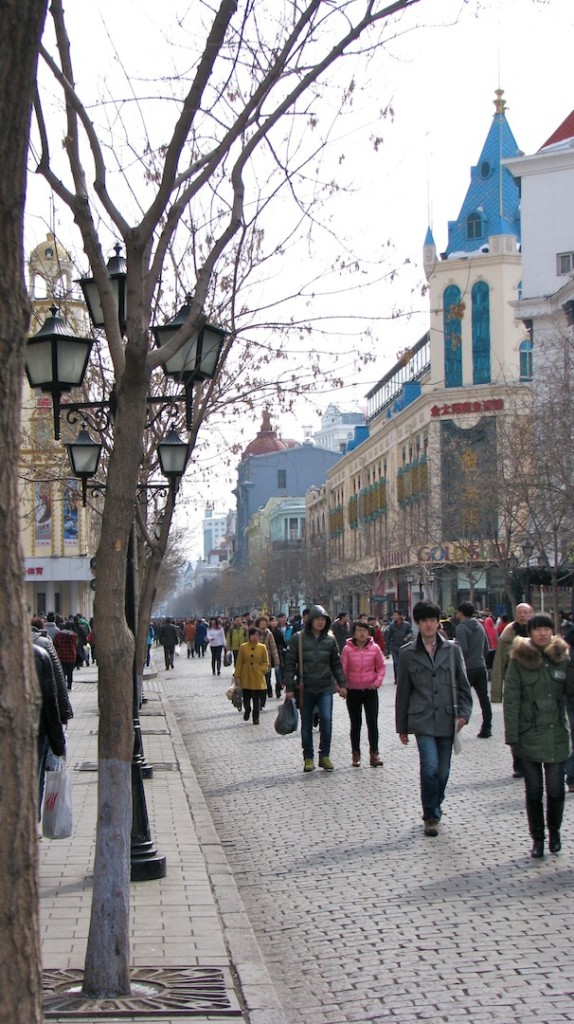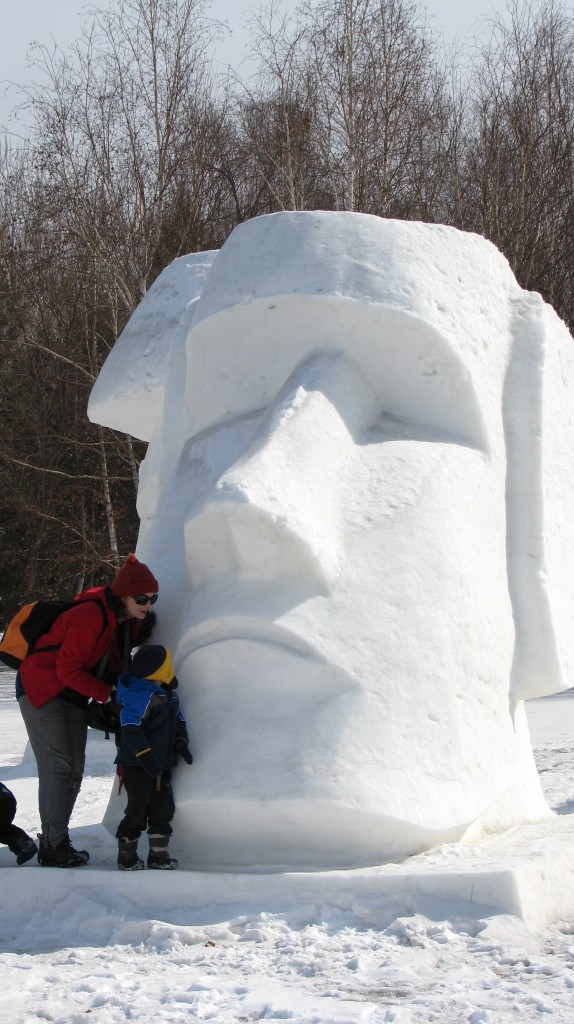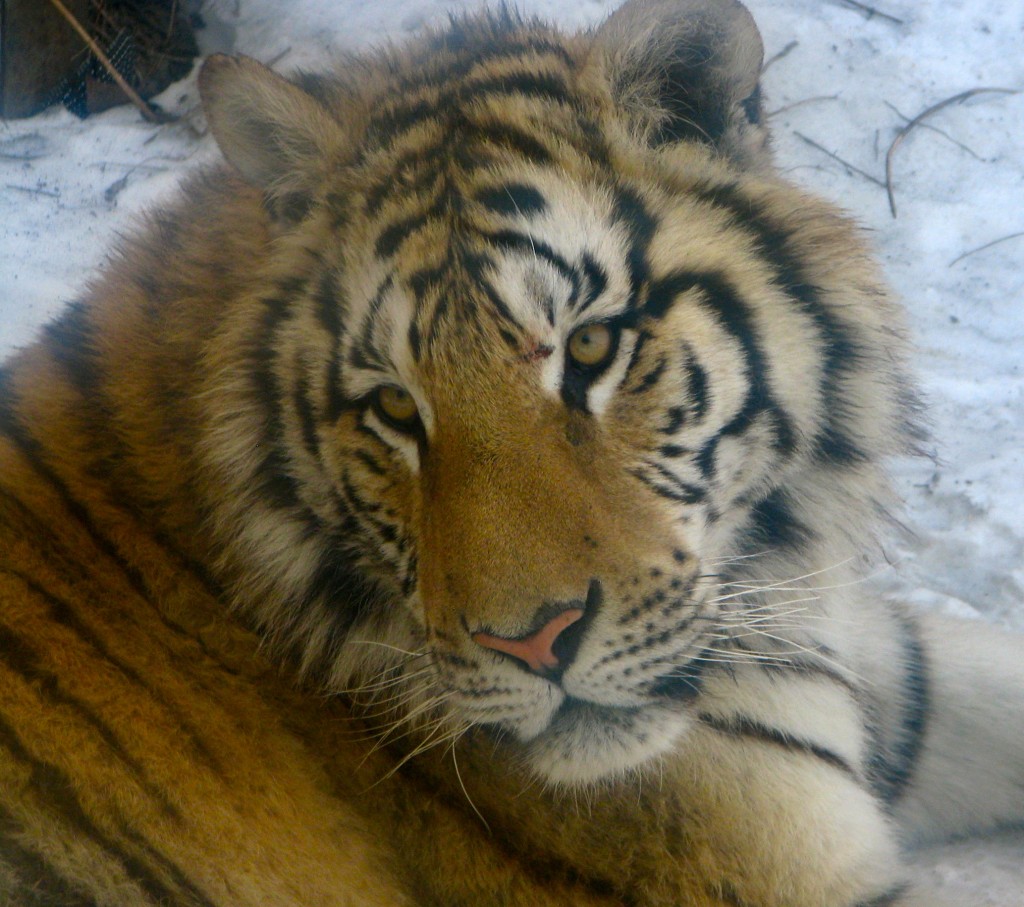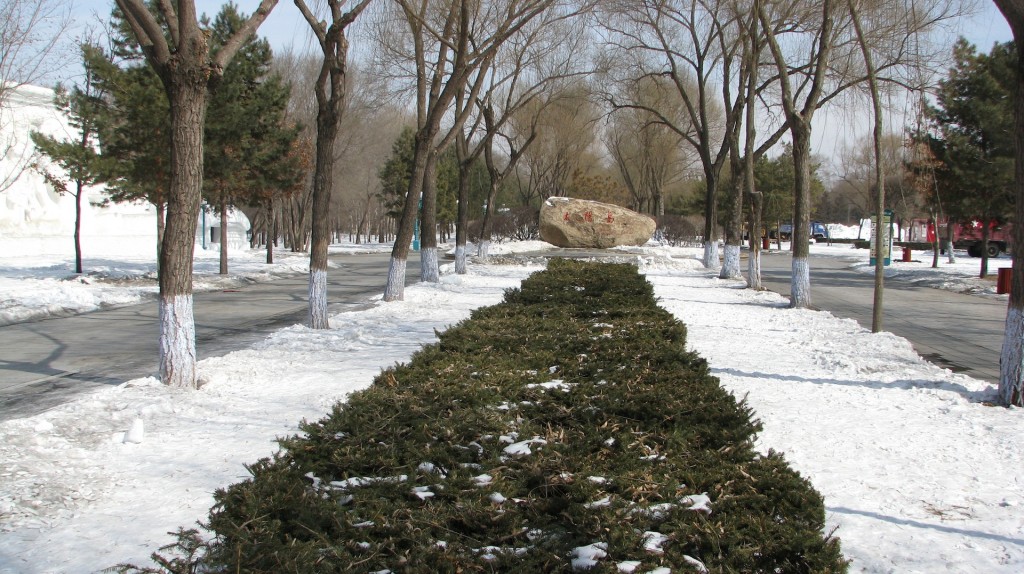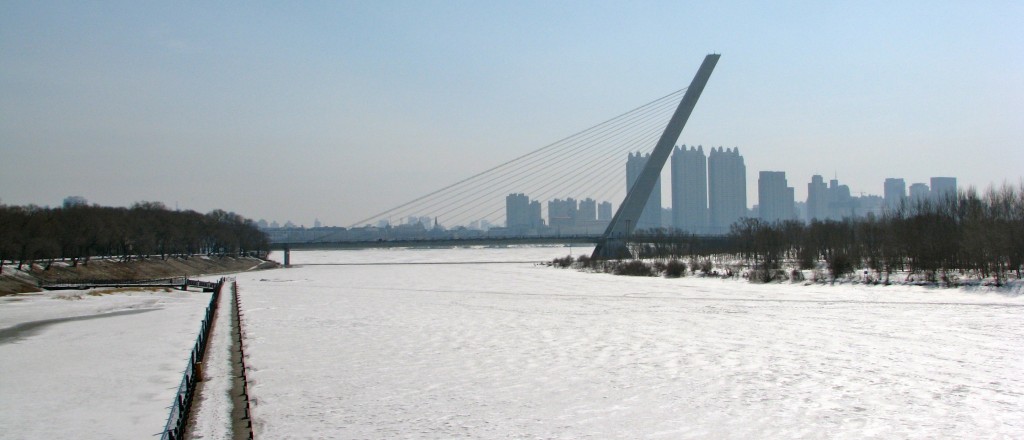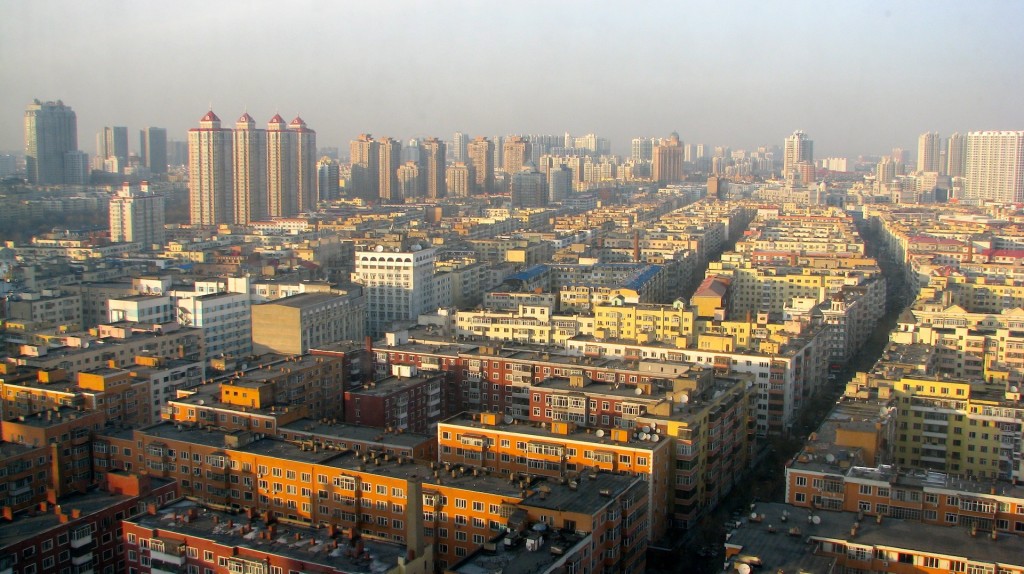Harbin is not a city that I had imagined visiting – not the least because six months ago I had never heard of it. My ignorance is embarrassing given that it is a city of 5 million people (10 million live in the greater Harbin area) and is China’s 10th largest. We came to Harbin after a week spent at Yabuli Ski Resort Club Med as it was our fly-in-fly-out point. What we discovered was a high-rise metropolis`of wide streets, prolific public art work and Russian influence. Harbin was established by Russians in China’s north-east Heiliongjiang Province just over one-hundred years ago. It is well deserved of its colloquial title as China’s “Ice City” with winter temperatures of -19°C being the norm. The city capitalises on their icy winter by hosting an annual Snow and Ice festival from early January to early March each year. Having been pre-warned that English was rarely understood in Harbin we opted to have a driver and English speaking guide accompany us for our day of sight-seeing. While this may have been an extravagance it meant our children could be secured safely in our own car seats rather than travel unsecured in a seatbelt-less taxi on icy roads. Our guide also ensured that we made the most of our short time in the city and recommended the best sites to visit with children.
The Siberia Tiger Park is home to over five hundred tigers and plays an important role in this endangered species protection. Visitors to the park travel via bus through free-range enclosures surrounded by numerous tigers of different age and sizes. Our visit during winter meant that we missed out on cuddling the tiger cubs, which is encouraged during the warmer months. Parents be warned – vistors are also encouraged to feed live animals to the tigers however there is no pressure to do this and we quickly removed ourselves from the area where this was occurring. Entry to the park was 90 RMB (about 18 Australian dollars) for adults and my pre-school aged children were free.
Sun Island snow sculptures.
Harbin annually hosts on of the largest snow and ice festivals in the world, occurring from early January to early March. A number of sites display the most exquisite ice and snow sculptures and there is ample opportunity for snow and ice play including ice-skating and ice slides. Many of the ice sculptures are illuminated at night. After planning our trip to China’s north to incorporate a visit to Harbin’s annual snow and ice festival I was disappointed when a necessary reschedule meant we missed the festival by a week. Lucky for us many of the sculptures were still intact during our mid-March visit. We experienced the snow sculptures at one of the festival’s sites, Sun Island. Entry to Sun Island’s snow sculptures was 120 RMB (about 20 Australian dollars) and my pre-school aged children were free.
Central Street
This cobbled street was clearly popular with locals who, unlike us went hat and glove-less in the sub freezing temperatures. The Russian architecture conveys a European sensibility that was both charming and disconcerting in its Chinese location. Central Street was obviously the place to shop in Harbin – if only I had the chance to go shopping when I travel with little ones.
Russian restaurants are favoured by locals but we caved in to our by now over-tired children and instead dined at KFC (oh the shame).
While in Harbin we stayed at the New Paris Hotel an extravagantly palatial premises which although comfortable was not so child friendly. It’s website promised a non-existent children’s playroom and we were banned from using the swimming pool because we had children with us.
We flew to Harbin from Shanghai on China East Airlines. Flights to Harbin also fly direct from Hong Kong.
This blog provides tips and advice for parents traveling with small children including attraction and accommodation reviews. You can join us on Facebook to receive updates to your news feed.
You may also be interested in Ten tips for families traveling to China with children.
© Copyright 2013 Danielle, All rights Reserved. Written For: Bubs on the Move
